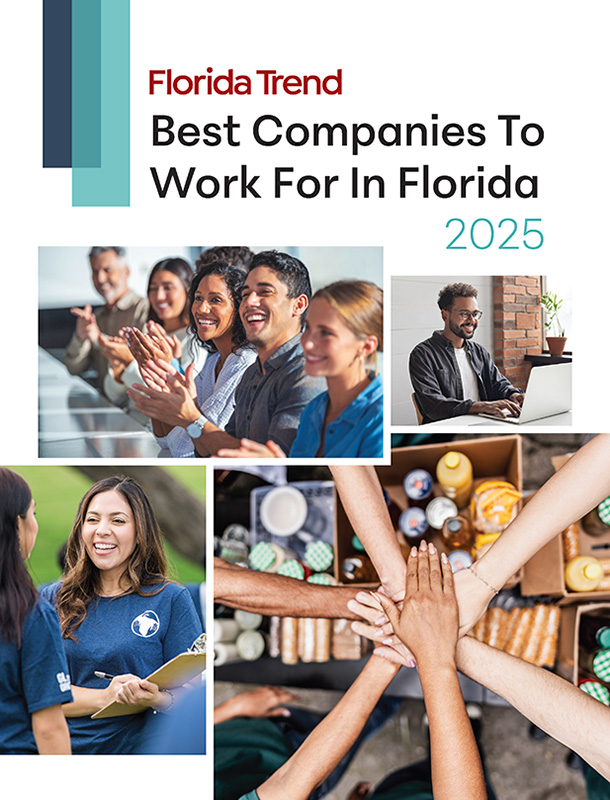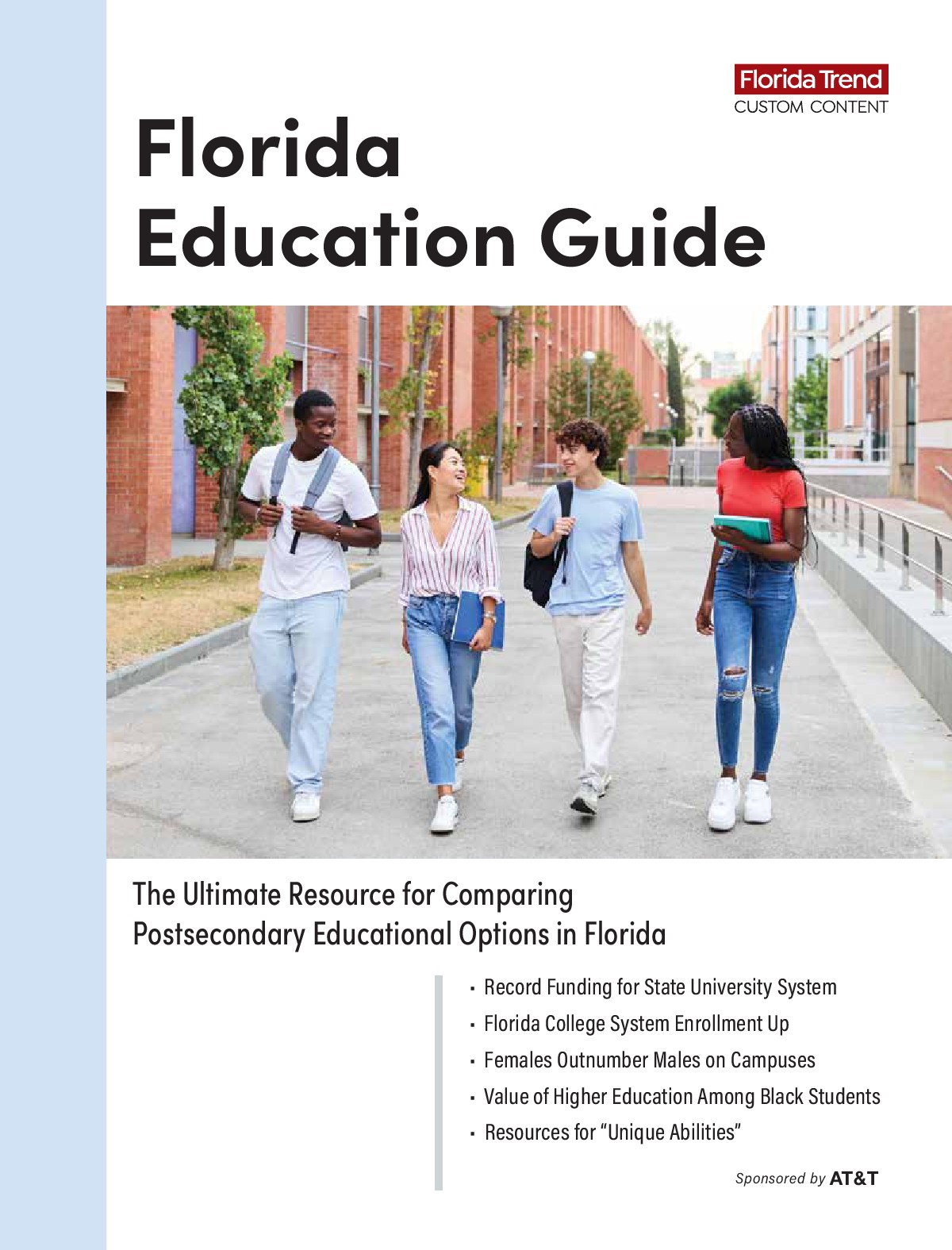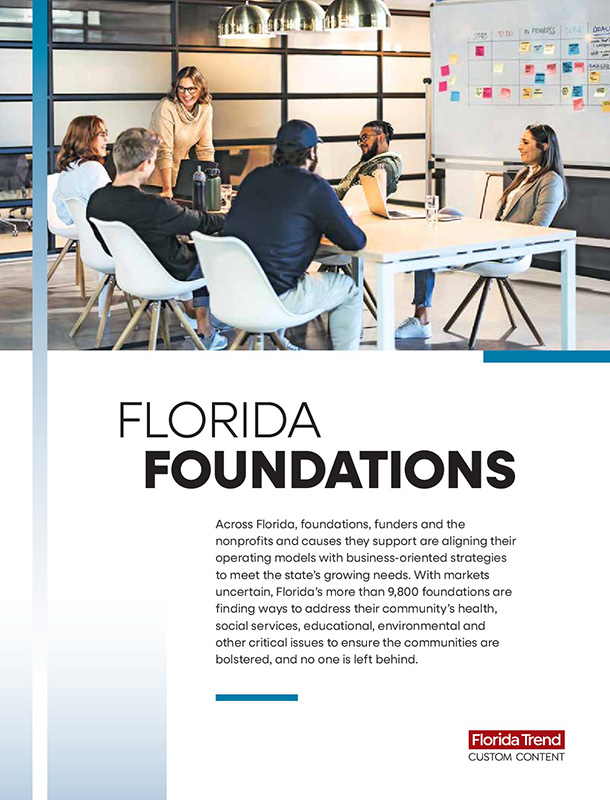April 2025 | Michael Fechter
Florida obstetricians deliver an average of 219,000 babies statewide each year. But nearly half of the 1,521 obstetricians who responded to a 2024 state survey say they may stop providing that care in the next two years.
“That is startling. That is frightening,” says Florida Hospital Association (FHA) President and former Florida Agency on Health Care Administration Secretary Mary Mayhew.
Mayhew points to a series of chronic factors — burnout due to the long and unpredictable hours, high medical malpractice premiums and low reimbursement rates, especially from Medicaid.
But those factors don’t explain a dramatic spike in obstetricians thinking of getting out compared to previous years.
Florida’s Department of Health issues an annual physician workforce report based on a survey physicians must complete when renewing their licenses. From 2015-18, between 12.5% to 17% of Florida obstetricians and gynecologists said they might stop obstetric care within two years. That rose to about a third from 2021-23. In 2024, of the 1,521 obstetricians and gynecologists (OB-GYNs) who deliver babies, 742 “reported they plan to discontinue obstetric care within the next two years.”
That’s 48.7%.
The prospect of losing so many doctors in one specialty is cause for alarm in a state already facing a physician shortage fueled by population growth and an aging workforce. Nearly a third of the state’s 97,900 licensed physicians are aged 60+, the state survey shows. A 2023 FHA study projected Florida could be shy 18,000 doctors by 2035.
Post-Dobbs
Florida’s 2024 law, passed in the wake of the Supreme Court’s Dobbs decision overturning Roe v. Wade, makes it a third-degree felony to perform an abortion after six weeks into a pregnancy, punishable by up to five years in prison and losing a license to practice. This has obstetricians grappling with an inherent conflict, says 36-year veteran Gainesville obstetrician Karen Harris: What do you do when a patient needs a standard of care that could land you in jail? There’s a common feeling among doctors, she says, “that when we have to consult the legal books before the medical textbooks to practice medicine, there’s something wrong.”
Harris started North Florida Hospital’s OB-GYN residency program in 2018 that trains 16 physicians at a time. They travel to “non-restrictive” states to obtain mandatory training in certain procedures that are now prohibited in Florida, she says. Others take fellowships elsewhere and don’t come back.
“We lose our physicians who can handle the most complex and difficult pregnancy complications. And so women’s health suffers. We have very few providers now who are skilled in this,” Harris says. “This is a technical skill you need to learn, and we can’t train them. And so you start losing people, and women have worse outcomes or have a different type of intervention that’s not as safe.”
Significant swaths of the state already are considered “maternity deserts,” with no hospital providing delivery care and no OB-GYNs in entire counties. Okeechobee County families, for example, welcome about 546 new babies each year. If any were born within the county itself, it wasn’t at a medical facility. To deliver in a facility equipped for childbirth, mothers must drive 40 miles to Fort Pierce or Port St. Lucie. It’s a poor agricultural community, says Andrea Medellin, executive director of Okeechobee Healthy Start. There are high rates of obesity and other risk factors for pregnant women.
Many families don’t have access to transportation to get to prenatal check-ups. The state-funded Healthy Start programs provide support to pregnant women and their families, including screenings to determine risk factors and vouchers to help pay for prenatal care.
Life in a maternity desert means “an increase of poor birth outcomes,” Medellin says. “You’re at a higher risk of having a low-birthweight baby, having a maternal morbidity and losing mom. Our ultimate goal at Healthy Start is to reduce infant mortality. This is the biggest battle we’re constantly fighting just to find the means for income, the means of manpowering such a small rural area where it’s so difficult. As a nonprofit, we can only do so much.”
Florida is the first state in the nation to allow C-sections to be performed in outpatient facilities known as Advanced Birth Centers.
The March of Dimes gives Florida a D+ in its 2024 report card, noting the rise in its preterm birth rate, which stands at 10.7%. Black babies are 1.5 times more likely to be born preterm, and their infant mortality rate is 1.8 times higher than white babies.
Those numbers can only worsen if a significant number of OB-GYNs stop treating pregnant women. And it’s not an idle threat, says Julie DeCesare, a Pensacola obstetrician and past president of the Florida Obstetric and Gynecologic Society.
“Of my colleagues in residency, at least half have stopped obstetrics,” she says.
Since the abortion law passed, she and her colleagues have had pharmacists and other doctors question and/or challenge their treatment of patients. “Our integrity and our specialty is being questioned,” DeCesare says. “You would never question an orthopedic surgeon if they’re replacing a hip as a medical procedure. A (dilation and curettage procedure) for a miscarriage is a medical procedure. Why are you questioning me?”
The ramifications of an OB-GYN exodus extend far beyond the delivery room. “It’s not just who’s going to deliver your baby,” DeCesare says. “Who’s going to do your mom’s hysterectomy when she has ovarian cancer?”
Florida’s maternity deserts include chunks of the Panhandle. At the Women’s Group of North Florida in Gainesville, where Harris practices, patients come from as far west as Steinhatchee on the Gulf Coast, Live Oak to the north and Palatka to the east.
Gainesville lost five private practice obstetricians last summer to regular turnover. Two retired, two relocated and one left the state. Another is retiring this summer. Her practice has a seven-week waitlist, Harris says. “It used to be two. I don’t have the obstetricians.”
No Easy Solutions
Most pregnancies are low-risk and go smoothly. The state has expanded the ability for certified nurse midwives to work without physicians present if they have 3,000 clinical hours of work supervised by doctors, which Harris says can suffice for most low-risk pregnancies.
State lawmakers also passed legislation last year allowing for “advanced birth centers,” often owned by private equity groups, where C-sections could be performed outside a hospital. It was driven in part by a desire to increase service to maternity deserts. No other state has tried this, however, and critics are concerned about unexpected complications that could put mother and baby at risk without a hospital’s resources and staffing.
A better approach, DeCesare says, would increase pay for obstetricians, who have malpractice insurance that often exceeds $100,000 a year while they earn less than other specialties. And Medicare’s fee schedule, which sets the benchmark for what most health insurers pay for various services, hasn’t been adjusted in decades. “Think about the cost of inflation. But I’m not getting paid any more,” she says.
Labor and delivery units are a financial strain on hospitals, Mayhew says, with Medicaid paying 46% of birth costs. That is difficult for hospitals “to sustain without having to subsidize from other areas of the hospital to preserve access.” Nearly 20 Florida hospitals have shut down their maternity services since 2019, with Cleveland Clinic Martin North as of April 1, citing “staffing challenges based on the shortage of OB-GYN physicians both in Florida and nationwide.”
Florida’s shortage could soar if significant numbers of those OBGYNs who say they may stop providing pregnancy and childbirth care do so. Pregnancies that call for prohibited care, potentially putting a doctor’s freedom and career in jeopardy, don’t happen often, Harris says, but it’s often unpredictable and “always hanging over your head.”
There hasn’t been a test case yet, which adds to the uncertainty.
“And who wants to be the first to take the risk? And risk losing your license, losing your livelihood and having that mark against you,” Harris asks. “So why would you stick your neck out to care for a patient with a specific problem when you know you (it) might get the police (to) come and arrest you?
“Can you live with that? And for some people the answer is no.”













